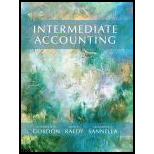
a.
Inventory carrying value with the lower-of-cost-or-market (LCM) rule using individual item basis.
Given Information:
Selling price of four foot furniture is $120, Six foot furniture is $160 and Eight foot furniture is $200.
FIFO cost of four foot furniture is $84, six foot furniture is $94 and eight foot furniture is $150.
Current replacement cost of four foot furniture is $72, six foot furniture is $88 and eight foot furniture is $125.
Disposal cost of four foot furniture is $18, six foot furniture is $25 and eight foot furniture is $20.
Normal profit on four foot furniture is 20%, on six foot furniture is 25% and on eight foot furniture is 30%.
Units in ending inventory in four foot furniture are 1,000 units; in six foot furniture is 2,100 units and in eight foot furniture is 900 units.
b.
To prepare:
c.
Carrying value of the inventory with LCM rule using total inventory basis.
d.
To prepare: Journal entry to record written down LCM using direct method is as follows:
Want to see the full answer?
Check out a sample textbook solution
Chapter 10 Solutions
Intermediate Accounting

 AccountingAccountingISBN:9781337272094Author:WARREN, Carl S., Reeve, James M., Duchac, Jonathan E.Publisher:Cengage Learning,
AccountingAccountingISBN:9781337272094Author:WARREN, Carl S., Reeve, James M., Duchac, Jonathan E.Publisher:Cengage Learning, Accounting Information SystemsAccountingISBN:9781337619202Author:Hall, James A.Publisher:Cengage Learning,
Accounting Information SystemsAccountingISBN:9781337619202Author:Hall, James A.Publisher:Cengage Learning, Horngren's Cost Accounting: A Managerial Emphasis...AccountingISBN:9780134475585Author:Srikant M. Datar, Madhav V. RajanPublisher:PEARSON
Horngren's Cost Accounting: A Managerial Emphasis...AccountingISBN:9780134475585Author:Srikant M. Datar, Madhav V. RajanPublisher:PEARSON Intermediate AccountingAccountingISBN:9781259722660Author:J. David Spiceland, Mark W. Nelson, Wayne M ThomasPublisher:McGraw-Hill Education
Intermediate AccountingAccountingISBN:9781259722660Author:J. David Spiceland, Mark W. Nelson, Wayne M ThomasPublisher:McGraw-Hill Education Financial and Managerial AccountingAccountingISBN:9781259726705Author:John J Wild, Ken W. Shaw, Barbara Chiappetta Fundamental Accounting PrinciplesPublisher:McGraw-Hill Education
Financial and Managerial AccountingAccountingISBN:9781259726705Author:John J Wild, Ken W. Shaw, Barbara Chiappetta Fundamental Accounting PrinciplesPublisher:McGraw-Hill Education





